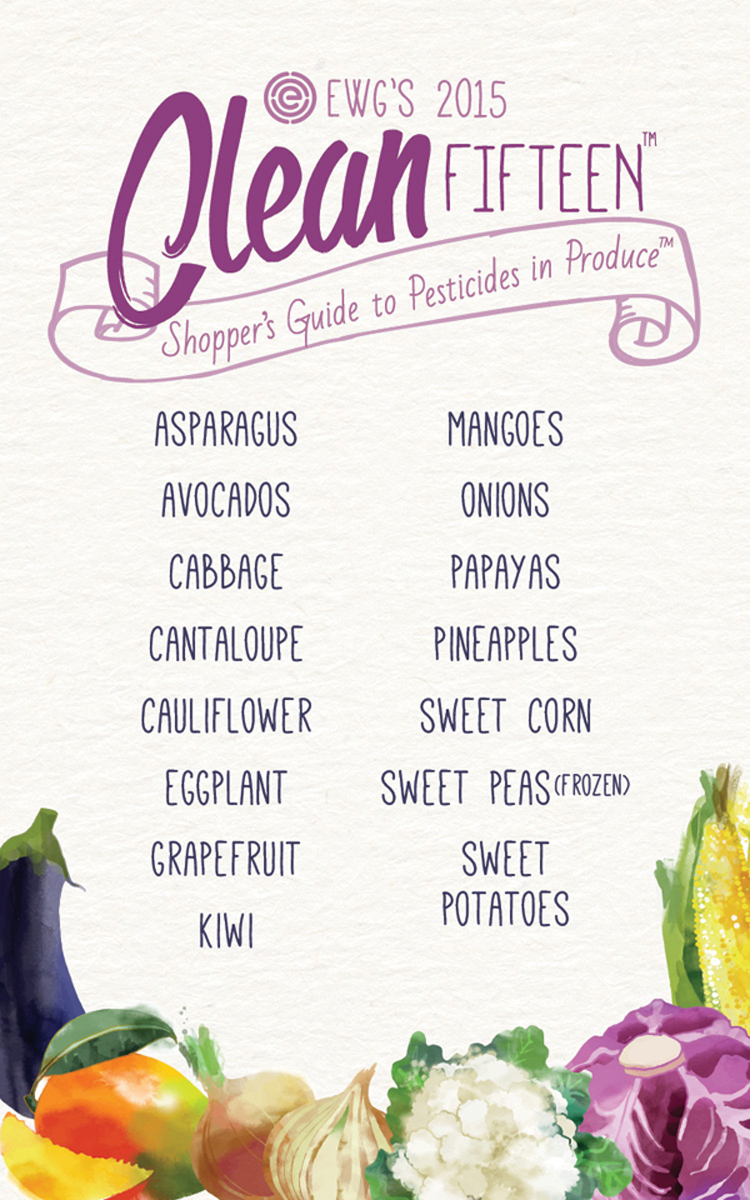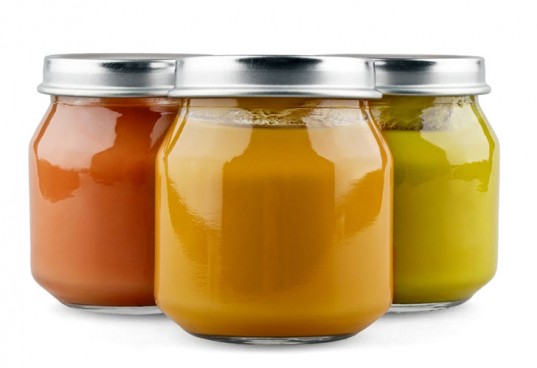The Clean Fifteen: No Need to Buy These Fruits and Veggies Organic

Nearly two thirds of the 3,015 produce samples tested by the U.S. Department of Agriculture in 2013 contained pesticide residues. These USDA tests also found a total of a whopping 165 different pesticides on thousands of fruit and vegetables sampled.
Americans are starting to become more aware of this and are showing it with their pocketbooks. Though the organic produce only accounts for 4% of produce sales, it has seen double-digit growth in recent years. Organic produce sales spiked for $5.4 billion in 2005 to an estimated $15 billion in 2014.
There are so many more facts and things I could share about this topic, but I think most of you already know at least a little bit about this topic, but I do think it is a important thing that we as Americans need to understand. There are some scary pesticides that are found on our food and can affect the body in some bad ways.
I think we all know this and if you're anything like me, you wish you could buy all organic produce all the time, but for me, it is really just not in my budget to be able to do so. So here is a great list that shows the "clean fifteen" list, a list of fruits and vegetables with the least amount of pesticides present. This way if you are going to try to start incorporating some organic produce, you can know that you could buy the regular produce of these 15 things. This list is in order of the number of pesticides present, number one having the fewest.
1. Avocados
2. Sweet Corn
3. Pineapples
4. Cabbage
5. Sweet Peas (Frozen)
6. Onions
7. Asparagus
8. Mangoes
9. Papayas
10. Kiwi
11. Eggplant
12. Grapefruit
13. Cantaloupe
14. Cauliflower
15. Sweet Potatoes

Key Findings:
· Avocados were the cleanest: only 1 percent of avocado samples showed any detectable pesticides.
· 89 percent of pineapples, 82 percent of kiwi, 80 percent of papayas, 88 percent ofmango and 61 percent of cantaloupe had no residues.
· No single fruit sample from the Clean Fifteen list tested positive for more than 4 types of pesticides.
· Multiple pesticide residues are extremely rare on Clean Fifteen vegetables. Only 5.5 percent of Clean Fifteen samples had two or more pesticides.
Pesticides in Baby Food

One more thing I wanted to touch on in this regard was the amount of pesticides that are in baby food. I was absolutely stunned when I read how many pesticides, some of them VERY dangerous, are in baby food. Thankfully a lot of them are cooked away in their process of making this baby food so they do have less pesticides than the comparable raw produce, but it is still very concerning. A lot of the pesticides that are found in baby foods are absolutely banned in other countries so it is very concerning to me why our country has way fewer laws regarding what is legal to put on our foods, especially for young babies!
Here is just one example of the pesticides found in baby food to show you what I'm talking about. The USDA tested 379 baby food applesauce samples for five pesticides. Some 23 percent of the samples contained acetamiprid, a neonicotinoid pesticide that European regulators singled out for additional toxicity testing because it might disrupt the developing nervous system. Another 10 percent of the samples contained carbendiazim, a fungicide.
I have a baby right now that is still eating baby food so I have decided I am going to spend the extra few cents per jar to pay for the organic baby food. Or better yet, try my best to make it myself so I can save money.
Next week I am going to share the "Dirty Dozen" foods that have the most pesticides on them that you could really think about swapping out for organic next time you are at the grocery store. This is definitely just the tip of the iceburg on this topic, you can get all the information you could need on organic vs. regular produce and food very easily, but I do think it is a very important topic that everyone should research on their own so they fully understand what is going on and can make the best decisions for their family and themselves.
- www.ewg.org
- www.usda.gov
- www.dreamstime.com
 Mary Richardson
Mary Richardson
Weekly Newsletter Contributor since 2014
Email the author! mary@dvo.com
